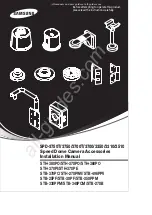
2
DLS-225 Configuration
Download
Query
Restart
Defaults
Delete
Save
Com Port
Help
About
Exit
Configuration Name:
*NI-1 Basic Mode
Switch Type:
National ISDN-1
Switch Provisioning
D Channel X.25:
None
B Channel:
None
Multi-Point
Caller Identifaction
Terminal Display Text
Line Provisioning
Electronic Key Telephone Service (EKTS)
Additional Call Offering (ACO)
Call Appearances:
00
Key Hold:
Off
Windows based
configuration
software (sample
screen shown at
right) comes with
the ISDN Line
Simulator.
ISDN Line Simulator
The ISDN Line Simulator is an
affordable and convenient tool for
developing and testing ISDN-BRI
products designed for either U or
S/T interfaces, including network
terminations, Type 1 terminating
equipment, and terminal adapters.
The device eliminates problems
inherent in testing actual ISDN lines
and, because the line simulator is
essentially an ISDN-BRI server in
a box, it makes the transition from
traditional telephony to ISDN
networking easier.
With the line simulator, there’s
no need to specify ISDN services
or buy protocol analyzers. It includes
two BRI lines for simulating end-to-
end real-time calls. It lets you
demonstrate Physical Layer, Data
Link Layer, and Network Layer
operations during multiple, real-time
voice or data calls.
Use it to test PBX BRI phones
and simulate multiple switch
protocols (National ISDN-1, AT&T
®
Custom, DMS Custom, and ETSI)
so you can determine operational
differences between them.
The ISDN Line Simulator
comes with Windows
®
based
provisioning software supporting
the different switch types. Simply
connect the simulator to your
computer’s serial port with the
included RS-232 cable.
The simulator also offers
flexible configuration. You can
configure up to six devices point-
to-multipoint through a network
termination or at the U interface,
or a passive bus arrangement at
the S/T interface.
The simulator uses Time Slot
Interchange technology to route
Speed and Circuit Mode Data
(CMD) connections on either B
channel. What‘s more, its D
Channel Packet Handling Function
(PHF) can be used to simulate X.25
Packet Mode Data (PMD) calls.
Predefined Service Profiles IDs
(SPIDs) auto-initialize directory
numbers and assign service
profiles that provide you with
unlimited call types, multiple call
appearances, Caller ID, and other
services.
Advanced Line Emulator
The Advanced Line Emulator not
only emulates the North American
telco network for the purposes of
simulating line conditions in test
applications, but it can be used to
test equipment against international
line conditions, too.
The emulator offers dual 2-port
or 4-port operation with the ability
to support independent calls
simultaneously. Three numbers
can be programmed for each of
its four lines.
With it, you can also program:
600- or 900-ohm input impedance,
ring frequency, ringback tones,
cadence, loop current, and DC
signaling, as well as attenuation,
call timings, test tone frequencies,
and more. Call Waiting, Visual
Message Waiting, and Stuttered
Dial Tone are among the number
of programmable call features
supported by the Advanced Line
Emulator.
The unit comes with two
software modules:
• The Advanced Simulation
Software Module, which
simulates white noise,
satellite delay, and other line
conditions, and measures
signal level. It enables or
disables Caller ID after each
ring, and enables or disables
DMTF detection. This test
software module also lets
you write custom scripts for
repetitive testing.
• The International Module,
which enables you to
generate various national
call progress tones, ringing
frequencies, and ringing
cadences. Call from one
country configuration to
another. It simulates not just
calls from the U.S. to other
countries but also calls
between two other countries.
The emulator enables you to
store up to 15 configuration settings
in it, including 11 preset country-
specific settings and 5 preset North
America settings. You can also
program your own.
Configure the emulator with
its Windows based software. It
also has a front-panel vacuum
fluorescent display that shows
you phone-port status information
and other messages.
(continued from page 1)






















